Key takeaways:
- Facebook Groups allow individuals to create genuine connections through shared interests, fostering a sense of community.
- Engagement can be increased by understanding audience needs, sharing valuable content, and recognizing member contributions.
- Clear guidelines and themed events help cultivate a positive environment and encourage active participation.
- Tracking engagement metrics and quality interactions is essential for measuring a group’s success and direction.
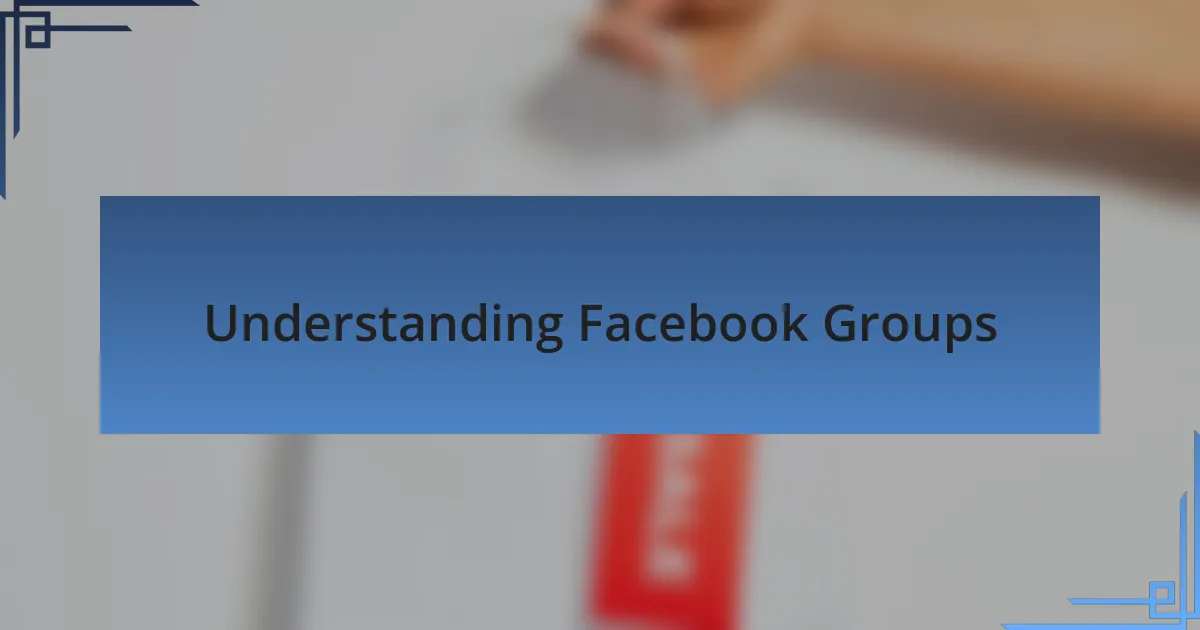
Understanding Facebook Groups
Facebook Groups serve as a vibrant platform where communities form and thrive around shared interests. I remember when I joined a local gardening group; it was fascinating to see how people from diverse backgrounds came together to exchange tips and support one another. Have you ever joined a group like that? The sense of belonging can be powerful.
What sets Facebook Groups apart is their ability to foster genuine connections. Unlike public posts, groups encourage discussions that feel more intimate and engaging. I’ve found that participating in these conversations often leads to authentic relationships that can extend beyond the digital world. Isn’t it intriguing how a shared passion can bring individuals together like that?
Moreover, managing a Facebook Group can be a rewarding experience. From setting rules to encouraging participation, I’ve learned the importance of creating a welcoming environment. This not only enhances engagement but also builds a loyal community. Have you considered how your own interests could translate into building your group? It might be your avenue to connecting with others who share your passions.
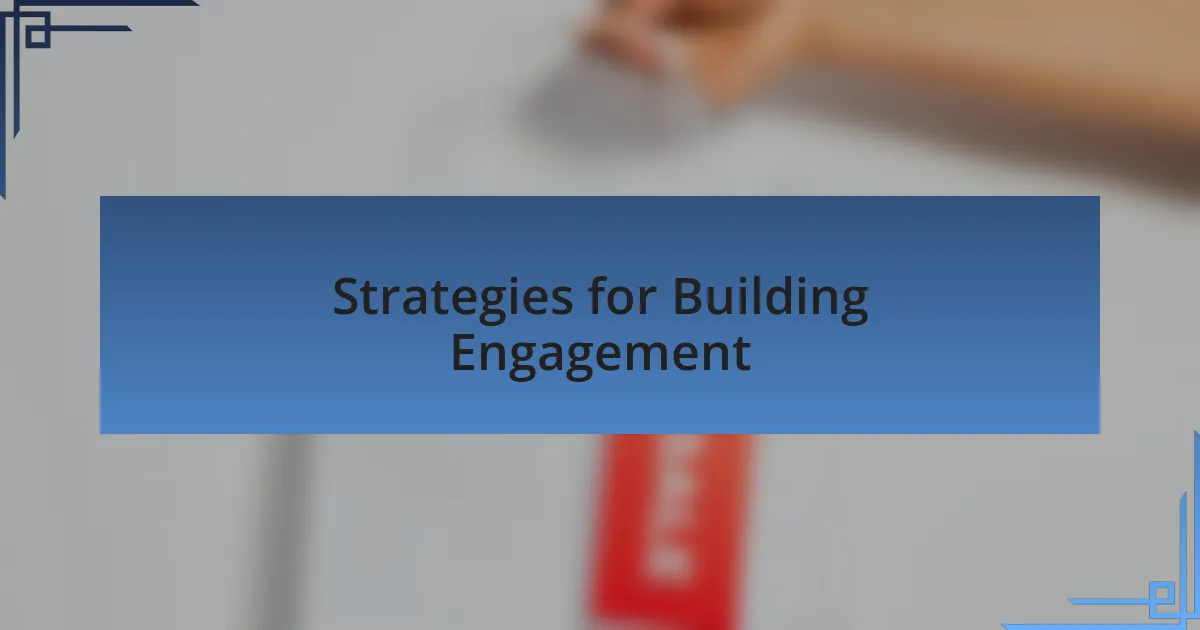
Strategies for Building Engagement
Creating engagement in Facebook Groups starts with understanding your audience’s needs. In my experience, asking open-ended questions can spark lively discussions. For instance, when I facilitated a thread about favorite gardening techniques, I found that members were eager to share their experiences, almost as if they were opening up a cherished book of family secrets. Have you noticed how a simple question can lead to a cascade of responses?
It’s also crucial to share valuable content regularly. I’ve experimented with posting curated articles and how-to videos that resonated with my group’s interests. When I shared a video on organic pest control, it was heartening to see members not only watching but also commenting on their own methods. It’s a reminder that the more you provide value, the more your community will engage with you. What valuable insights can you share with your group?
Lastly, recognizing and celebrating member contributions fosters a sense of belonging. I remember highlighting a member’s impressive garden transformation; it not only made them feel valued but also inspired others to share their progress. I believe acknowledging achievements, no matter how small, can transform your group into a supportive community. How might you celebrate your own members’ successes?
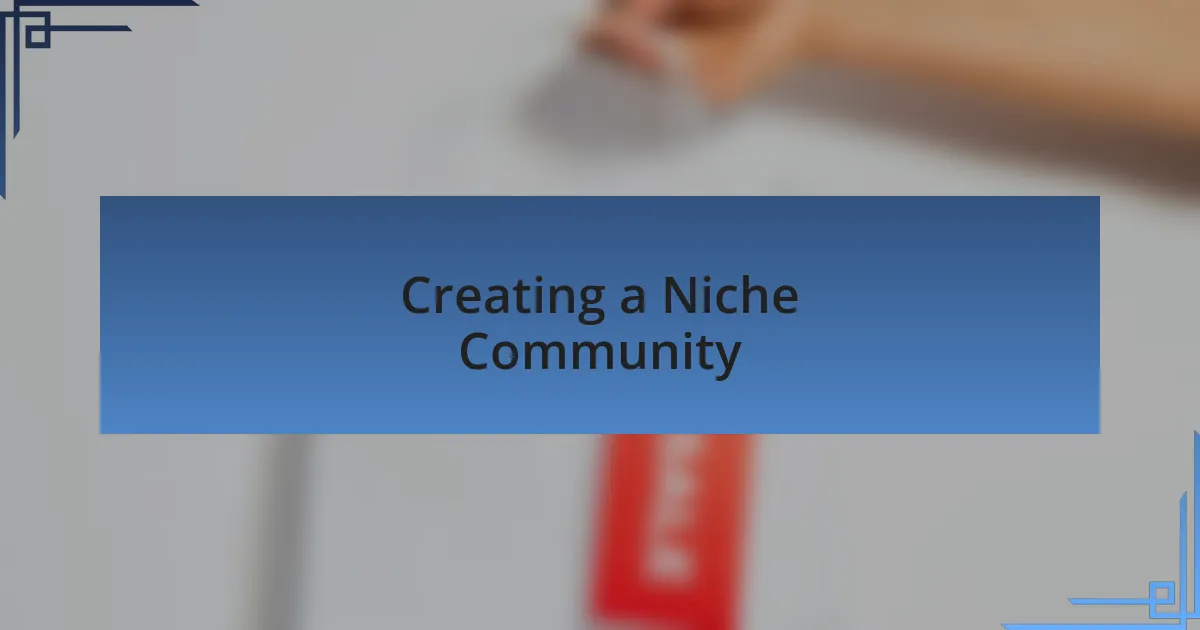
Creating a Niche Community
Creating a niche community requires a clear understanding of shared interests. When I launched my Facebook Group focused on sustainable living, I drew on personal passions and experiences to craft content that resonated deeply. This shared enthusiasm helped to cultivate an environment where members felt comfortable joining discussions and sharing their own journeys. Have you ever thought about how your personal interests could guide your community’s direction?
It’s important to establish clear guidelines that reflect the group’s purpose. I once implemented simple rules about posting behavior focused on respect and positivity. It was fascinating to see how quickly group dynamics shifted; members began to engage more thoughtfully, creating a supportive environment that attracted even more like-minded individuals. What rules might you consider to encourage positive interactions in your community?
Additionally, creating themed events can spark excitement and promote deeper connections among members. I initiated a “Sustainable Challenge Month,” where participants committed to eco-friendly actions. The result? A flurry of creativity and camaraderie filled the group. I still remember the pride in members’ voices as they shared photos of their compost bins or DIY projects. Wouldn’t it be fulfilling to see your community come together for a common cause like this?
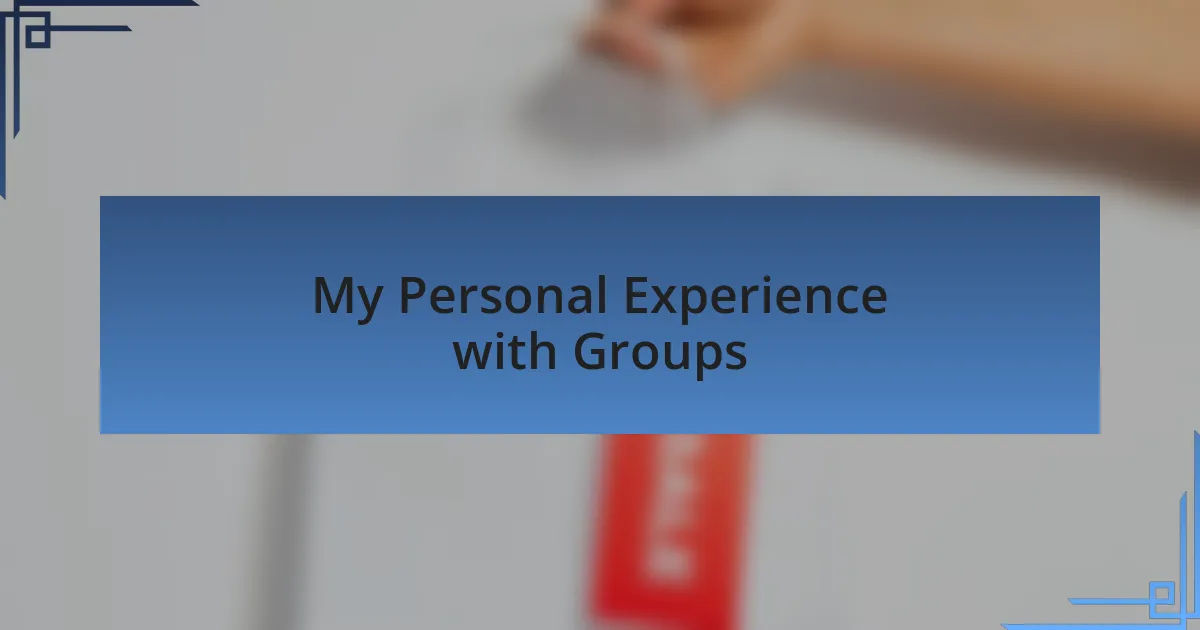
My Personal Experience with Groups
Once I joined a Facebook Group dedicated to travel photography, I was amazed by how quickly I felt connected to such a diverse group of individuals who shared my passion. We would share not just our pictures but the stories behind them, sparking deep conversations about our travels. Have you ever experienced a moment where a shared passion transformed strangers into friends?
The first time I led a discussion on editing techniques, I was nervous but excited to contribute. To my surprise, many members shared their tips and techniques, which not only enriched our conversation but also deepened my own skills. It was incredible to witness how collaborative learning can elevate everyone involved—what opportunities might arise if you share your knowledge in your own community?
There was an unforgettable moment during a live Q&A session when a member opened up about their struggles with confidence in their photography skills. I shared my own journey of overcoming similar fears, and that created a powerful bond among us. The sense of vulnerability and support in our group was moving; I still remember the warm messages that flooded in after the session ended. Have you thought about how authentic sharing can create lasting connections?
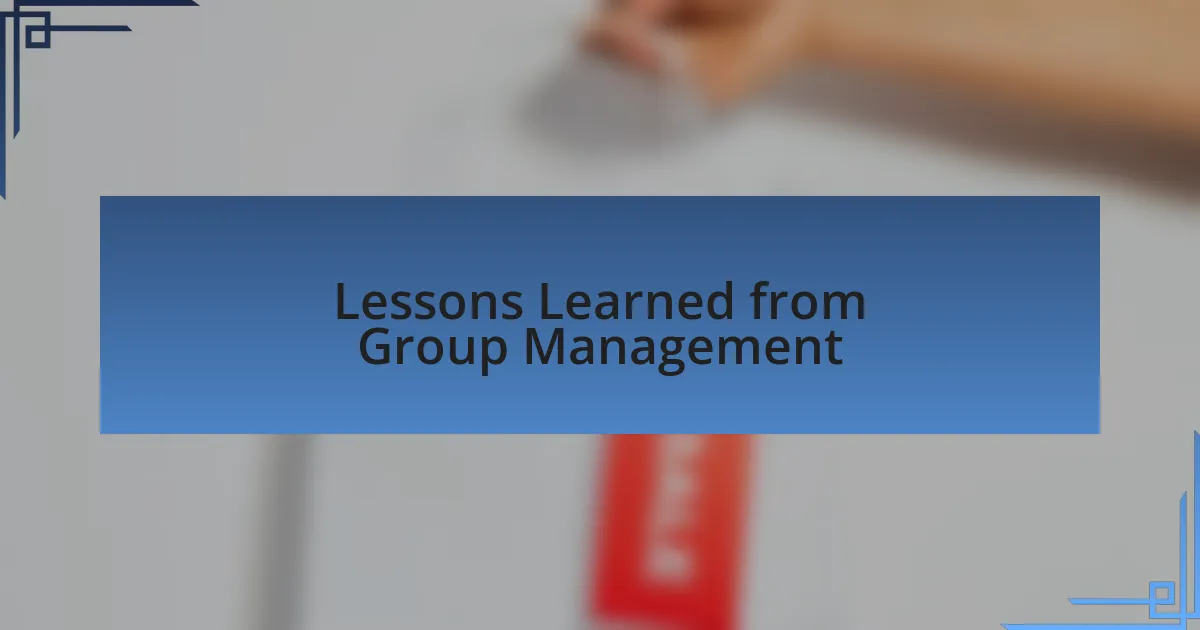
Lessons Learned from Group Management
One key lesson I learned from managing the group was the importance of clearly defined guidelines. In the early days, I noticed discussions spiraling out of control when rules weren’t established. I remember stepping in during a heated debate that left several members feeling uncomfortable. Setting expectations helped create a safe space for everyone, fostering healthier conversations. Have you considered how boundaries can empower community dynamics?
Another significant realization was the value of recognizing and celebrating member contributions. During one group meeting, I highlighted a member’s outstanding photo, which sparked a wave of appreciation. It wasn’t just about boosting their confidence; it rallied the group around the idea of mutual support. This experience made me appreciate that acknowledging individual efforts can cultivate a more engaged and motivated community. Have you thought about how simple recognition can elevate group morale?
Lastly, I discovered that authentic communication is crucial in maintaining engagement. There was a memorable moment when I reached out to a quieter member, asking about their thoughts on a recent thread. Their response not only surprised me but also sparked a new line of discussion that resonated with many others. I realized that sometimes, all it takes is a personal touch to draw out participation, creating a more vibrant community. How do you think a little extra attention could change the dynamic in your group?

Measuring Success in Facebook Groups
To effectively measure success in Facebook Groups, I found that tracking engagement metrics was paramount. By analyzing comments, likes, and shares, I realized which topics resonated most with our members. For example, a post I shared about community challenges garnered an unexpected number of reactions, illuminating what drives genuine interest. Have you ever considered how engagement stats can serve as a barometer for group health?
Another aspect I focused on was the quality of interactions, not just the quantity. On one occasion, a member penned an in-depth response that sparked off a lengthy discussion filled with valuable insights. It was in this moment that I understood the depth of connection formed through thoughtful dialogue. What do you think is more valuable: a high number of posts or substantial conversations?
Lastly, I believed that setting specific goals for the group could enhance its purpose and direction. When I aimed for a monthly mentorship check-in, the focused approach transformed our dynamics. Members began actively sharing their experiences and strategies, turning what was once a passive group into a lively hub of support. Have you tried setting clear intentions for your group to measure its progress?